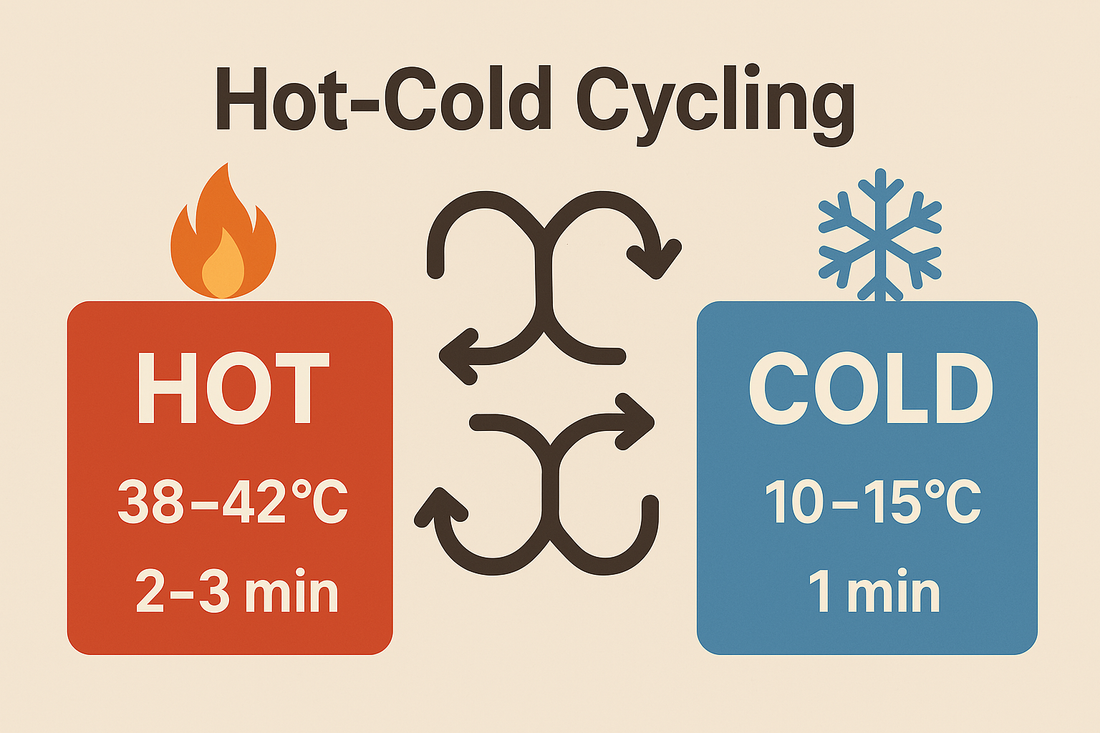
Hot-Cold Cycling: What Is It, and is it safe?
🔁 Hot-Cold Cycling: What Is It?
Contrast therapy typically involves alternating between:
- Hot immersion (35–45°C) for 1–3 minutes
- Cold immersion (10–15°C or lower) for 1 minute
- Repeated for 3–5 cycles, often ending on cold
This is believed to stimulate circulation, reduce inflammation, and accelerate recovery by causing vasodilation (hot) and vasoconstriction (cold) in a rhythmic pattern.
⚠️ Safety Concerns with Hot-Cold Cycling
1. 🫀 Cardiovascular Stress
- Rapid temperature shifts can cause blood pressure spikes, arrhythmias, or vasovagal responses.
- People with heart conditions, hypertension, or poor circulation are at elevated risk.
2. 🧠 Thermal Shock & Afterdrop
- Going from cold to hot too quickly can cause thermal shock, where blood vessels dilate rapidly, potentially leading to fainting or hypotension.
- Afterdrop is a phenomenon where core temperature continues to fall after exiting cold water, especially if reheated too quickly.
3. 🧊 Cold Shock + 🥵 Heat Exhaustion
- Cold immersion can trigger gasp reflex, while hot immersion can cause dizziness or dehydration if overdone.
- Repeated cycles may amplify fatigue rather than reduce it if not carefully timed.
✅ Best Practices for Safe Contrast Therapy
|
Step |
Temperature |
Duration |
Notes |
|---|---|---|---|
|
Hot Phase |
38–42°C |
2–3 min |
Avoid exceeding 45°C to prevent burns |
|
Cold Phase |
10–15°C |
1 min |
Beginners should start at 15°C |
|
Cycles |
3–5 |
~15–20 min total |
Always end on cold for anti-inflammatory effect |
|
Rewarming |
Gradual |
15–30 min |
Use warm clothes, not hot showers immediately |
🔄 Transition slowly between phases. Avoid jumping directly from ice baths into saunas or hot tubs without a few minutes of passive rewarming.
🧬 Who Should Be Cautious?
- Individuals with cardiac conditions, Raynaud’s disease, diabetes, or neurological disorders
- Pregnant individuals
- Anyone on beta blockers or vasodilators
- Those new to cold exposure or with low body fat
🧠 Final Thoughts
Hot-cold cycling can be safe and beneficial when done gradually, intentionally, and with awareness of individual limits. Clubs that offer this should ideally:
- Provide supervision
- Monitor water temperatures
- Educate users on afterdrop and rewarming
- Screen for contraindications
If you're designing or advising on these systems, you might consider integrating transition zones (e.g., ambient-temperature showers or benches) between hot and cold phases to reduce thermal shock.
